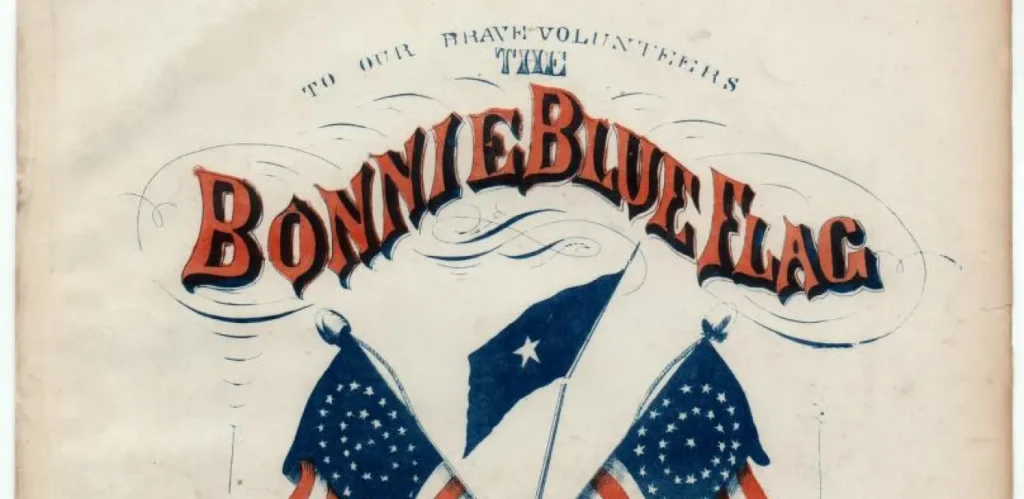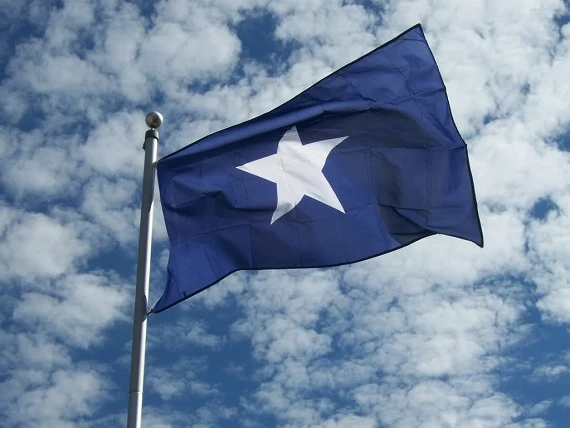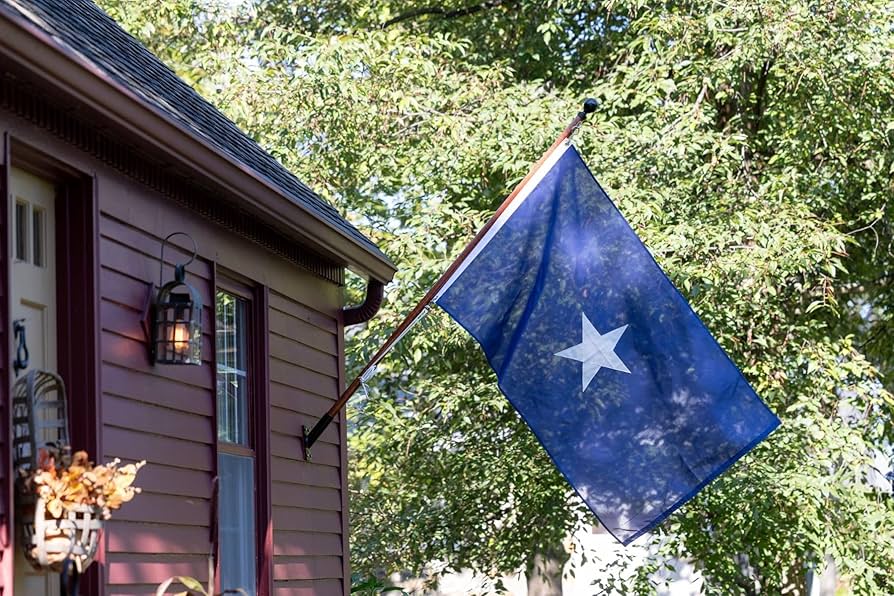The Bonnie Blue flag is a simple blue flag with one white star in the center. The “Bonnie Blue flag” was a banner associated at various times with the Republic of Texas, the short-lived Republic of West Florida, and the Confederate States of America at the start of the American Civil War in 1861. This flag is important in American history because it represents three different republics and inspired many other flags we know today.
Quick Facts About the Bonnie Blue Flag

- Design: Blue background with one white five-pointed star
- First used: 1810 in West Florida
- Also known as: The Lone Star Flag, Burnet Flag
- Famous for: Inspiring a popular Civil War song
- Legacy: Its first use being as early as 1810, it is considered the first lone star flag in U.S. history
What Does the Bonnie Blue Flag Look Like?
The Bonnie Blue flag is very simple. It has:
- A solid blue background (called a “field”)
- One white star with five points in the center
- No other decorations or words
The blue color stands for loyalty and truth. The single star means independence and unity. This design is so simple that many people can draw it from memory.
Where Did the Bonnie Blue Flag Come From?

West Florida (1810)
The first recorded use of this flag was in 1810 when it was used to represent the Republic of West Florida, a republic of English speaking inhabitants of southern Alabama, Mississippi, and portions of Louisiana east of the Mississippi River who rebelled against the reign of Spanish government. This tiny republic only lasted three months, but it was the first time anyone used this flag design.
Texas (1836)
Later referred to as the Burnet flag, it was adopted by the Congress of the Republic of Texas on December 10, 1836. Texas used this flag for three years before joining the United States. The Texas version had a golden star instead of white.
Civil War Era (1861)
Although never approved by the Confederate Congress, it was adopted by the southern people during the Civil War. On January 9, 1861, when Mississippi seceded from the Union, they held a ceremony at the capitol building in Jackson, MI, where a blue flag with a single 5-pointed white star in the center was hoisted as a symbol of independence.
The Famous Bonnie Blue Flag Song

“The Bonnie Blue Flag”, also known as “We Are a Band of Brothers”, is an 1861 marching song associated with the Confederate States of America. The words were written by the entertainer Harry McCarthy. Next to “Dixie’s Land,” perhaps no other song was as well loved by the Confederate soldier as “The Bonnie Blue Flag.”
The song helped make the flag famous. In attendance at the ceremony, was Harry Macarthy, who later in 1861 wrote a popular song entitled, “The Bonnie Blue Flag.” The name, “Bonnie Blue Flag” was first used in 1861.
How is the Bonnie Blue Flag Different from Other Flags?
Many people confuse the Bonnie Blue flag with other flags. Here’s how they’re different:
Bonnie Blue Flag vs Confederate Flag:
- Bonnie Blue: One white star on blue background
- Confederate: Multiple stars and stripes or crosses
Bonnie Blue Flag vs Texas Flag:
- Bonnie Blue: All blue with one star
- Texas Flag: Blue, white, and red sections with one star
Bonnie Blue Flag vs Other State Flags: The Bonnie Blue flag inspired many state flags, especially those with single stars like Texas and California.
Why is the Bonnie Blue Flag Important Today?
The Bonnie Blue flag matters because:
- First of its kind: It was the first lone star flag in American history
- Symbol of independence: Three different republics used it to show they were free
- Cultural impact: The song about it was hugely popular
- Design influence: It inspired many other American flags
Common Questions About the Bonnie Blue Flag
Was the Bonnie Blue flag only used by Confederates? No. It was used by West Florida in 1810 and Texas in 1836, long before the Civil War.
Is it legal to display the Bonnie Blue flag? Yes. It’s a historical flag that people can display legally.
Where can I see a real Bonnie Blue flag? Museums across the South often have examples, especially Civil War and Texas history museums.
The Flag’s Legacy
The Bonnie Blue flag left a lasting mark on American culture:
- It inspired the design of other state flags
- The song about it is still performed today
- It appears in movies and books about American history
- Flag collectors and history buffs still study it
Modern Uses of the Bonnie Blue Flag
Today, people display the Bonnie Blue flag to:
- Honor Texas or Southern history
- Show interest in historical flags
- Remember the three republics that used it
- Display at historical events and reenactments
Conclusion
The Bonnie Blue flag is more than just a blue cloth with a white star. It represents over 200 years of American history, from a tiny republic in 1810 to the Civil War era. Whether you’re interested in Texas history, Civil War studies, or just curious about historical flags, the Bonnie Blue flag offers a simple but powerful symbol of American independence movements.
This flag shows how simple designs can carry big meanings. From West Florida to Texas to the Civil War, the Bonnie Blue flag has been part of major moments in American history. Understanding this flag helps us better understand the complex story of America itself.


